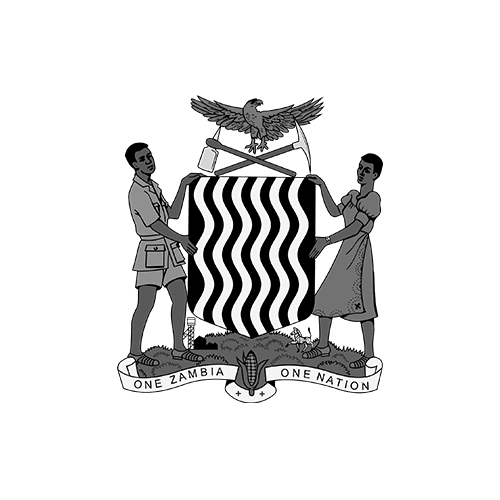Insights from the MUST Summer Project
Context of the study
The inclusion of solar power and other intermittent or variable sources of power supply impacts the operation of power systems in general, and hydropower plants in particular. This is becoming a relevant issue in many countries and regions where solar power is rapidly making up an increasing share of the supply mix. However, experience with operating the power system with the entry of variable renewable energy is still relatively limited, in particular in the Southern African context.
The Zambian power system is currently dominated by hydropower, which makes up about 80% of installed generation capacity, with the rest covered by resources such as coal, HFO, solar PV and diesel. Through GET FiT Zambia, with its 120 MW solar PV power project pipeline, as well as other initiatives, the Zambian Government foresees that a total of up to 1 GW of solar power may be added to the system by 2025. In light of potentially higher penetration of variable renewable energy resources, concerns have been raised on the impact that this would have on both the grid stability as well as the operations of existing power plants. Inclusion of new variable sources of power may also have financial and economic impacts on existing sector participants, such as the national utility company ZESCO.
In 2020, GET FiT supported ZESCO in assessing these impacts through the GET FiT Technical Assistance (TA) Facility. A study was conducted to evaluate how introducing variable renewable energy (such as solar and wind) would impact the power system in Zambia. The study was done as part of a summer student programme “MUST” run by the GET FiT Programme Implementation Consultant, Multiconsult. The students undertook the bulk of research and analysis for the study, under close supervision and support by Multiconsult’s experts.
Specifically, the study evaluated possible impacts on the power system of including 900 MW of Solar PV, from mechanical, hydrological, environmental and economic perspectives. One of the large hydropower plants was used as a case to develop and analyse different scenarios, by assuming that it would be the main plant to regulate its generation in order to balance the load (so-called load-following plant).

Wear and tear on mechanical equipment is manageable
Based on literature review and operational data from the load-following hydropower plant, the expected lifetime of the equipment is estimated to be reduced by maximum 10% (or an equivalent increase in operating expenses).
More solar PV power generation will imply that a number of generators at the hydropower plant must be shut down during mid-day (when the solar power production is at its highest), depending on the amount of solar power produced. The high-level assessment indicated that mechanical equipment can handle a new operational pattern. While leading to some wear of the equipment, the downtime may be utilised for planned maintenance, which in turn may lead to fewer outages and less unplanned maintenance. Further investigations are required to quantify exactly how much each component may be affected based on its properties and condition, and to take sub-hourly variations in production into account.
The study further found that system stability is not considered to pose a challenge. Because the connected generators are operating at low dispatch levels, the spinning reserves in the system are sufficient to stabilise the system and the power system can be expected to remain stable, even in the most extreme scenario with the highest amount of solar PV produced.

Increased solar power may impact the environment in downstream habitats
The study also looked into possible impact on water flow and the environment due to changed hydropower operations.
As the hydropower operations have to adjust to the intermittent solar PV generation, more hydropeaking operations from the dispatchable hydropower units will be required. Hydropeaking is the discontinuous release of turbined water due to peaks of energy demand. Thus, increased fluctuations of downstream river flows may be expected, and cause environmental impacts mainly to be downstream.
There is a lack of studies for tropical regions considering the environmental impacts of hydropeaking and site-specific investigations are required to map impacts and their magnitude. However, the study concluded that hydropeaking likely will cause environmental and social impacts that are different from those occurring at present. The study recommends considering distribution of the required hydropeaking to several power plants and spread the possible (negative) impacts across several river basins. Operational rules must be defined based on site-specific investigations and must ensure sustainability in terms of meeting both national and international regulation and standards.
Zambia’s role in the regional power system
Regional power trade is the key to harnessing solar power’s large potential value. A solid enabling environment for solar power, strong regional transmission capacities, sectoral incentives that promote financial sustainability, and bilateral trade agreements that reflect Zambia’s increasing regional importance, will play an important role to this end.
For Zambia, solar and reservoir hydropower could be an exceptionally good fit
The study suggests that new solar power could represent substantial value for ZESCO in terms of cost savings in the power sector cost structure.
Least-cost generation and power purchase between two scenarios were considered: i) without any new solar power and ii) with 895 MW solar in the system, on both a wet day and a dry day. The analysis indicated significant potential annual savings with the solar power. This was particularly significant on dry days when hydropower production is lower and the import prices are high, as power imports may be reduced. This, however, would need to be reviewed and validated in more detailed studies. The potential benefits of trading with flexible hydro, and potential mechanical and environmental impacts due to resulting changed hydropeaking patterns, would also need to be further assessed.

The simulated solar PV profiles and dispatch at the load-following power plant. Dispatch Case 1 is based on the total maximum solar PV profile, while the scaled Dispatch Case 1 is adjusted by the ratio between average and maximum solar profiles. This is to simulate a more moderate case and typical day (based on average) rather than the extreme case.
Net positive impacts of solar power for Zambia
Through the study, the GET FiT TA Facility has provided valuable indications and recommendations for ZESCO, providing a better basis for hydropower operations and planning toward a future with increasing shares of variable renewable energy power generation. Additionally, it shows the possible value and impacts solar power investments may have to the Zambian government from a policy perspective. Most importantly, it provides confirmation that on the overall, solar power is manageable and will have a positive impact for Zambia.
To view the full report which is complete with interview of the MUST students, please see below. A pdf version of the report is also available for download. Click here to download.


